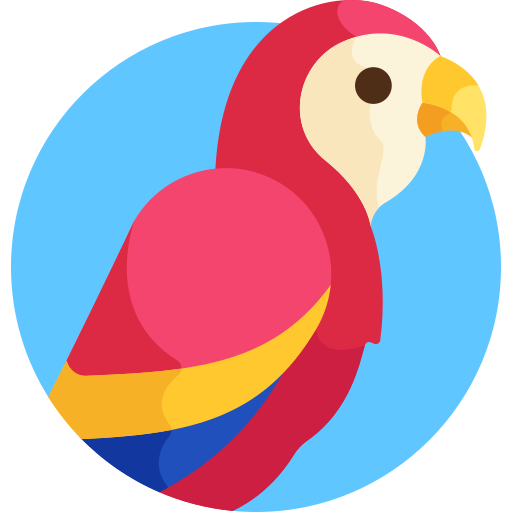
Parrot icons created by Freepik - Flaticon
Lorita helps you to transcript audio messages of your chat app.
Explore the docs »
View Demo
·
Report Bug
·
Request Feature
How many times you're in a meeting and receives and Audio Message? you can't take your phone and listen it, needs to finish the meeting and then listen.
Lorita-Bot transcribe that Audio Message to text, and you cand read it without listen it.
This is an example of how you may give instructions on setting up your project locally or in a Server.
Depends of how do you want deploy it:
-
Local (with Python):
- Install
Python 3.9,pipandvirtualenvon your OS.
- Install
-
Docker:
- Install
Dockeron your OS (also I recommend installdocker-compose)
- Install
-
Get a free API Key at deepgram.com
-
Get a free API Key at twilio.com
-
Clone the repo
git clone https://github.com/olidroide/lorita-bot.git
-
Create environment file
.envLORITA_BOT_DEBUG=True LORITA_BOT_BASEURL=/ LORITA_BOT_LOG_LEVEL=DEBUG LORITA_BOT_TWILIO_ACCOUNT_SID=[Twilio Account SID] LORITA_BOT_TWILIO_AUTH_TOKEN=[Twilio Auth Token] LORITA_BOT_DG_KEY=[Deepgram API KEY] LORITA_BOT_BACKEND_TELEGRAM_API_KEY=[Telegram API key obtained by BotFather] LORITA_BOT_BACKEND_DOMAIN_NAME=[your domain name example: lorita-bot.olidroide.es]
-
Deploy backend with Python 🐍
-
Make virtualenv
virtualenv venv --python=python3
-
Install dependencies
pip install -r requirements.txt
-
Launch server
sh python src/backend/main.py
-
-
Deploy frontend with Node 📦
-
Go to source folder of frontend
cd frontend -
Launch
npm run dev
-
-
Deploy with Docker 🐳
- Build docker image with docker-compose. Create this file
docker-compose.yml
version: '2.3' services: traefik: image: traefik:2.6.1 container_name: traefik restart: always ports: - 80:80 - 443:443 networks: - world - internal-lan extra_hosts: - host.docker.internal:host-gateway dns: - 1.1.1.1 - 8.8.8.8 security_opt: - no-new-privileges:true volumes: - /etc/localtime:/etc/localtime:ro - /var/run/docker.sock:/var/run/docker.sock:ro lorita-bot: image: ghcr.io/olidroide/lorita-bot:backend-latest container_name: lorita-bot restart: unless-stopped depends_on: - traefik networks: - internal-lan - world ports: - 8000:8000 environment: - LORITA_BOT_BACKEND_PORT=8000 - LORITA_BOT_BACKEND_DEBUG=True - LORITA_BOT_BACKEND_BASEURL=/api/v1 - LORITA_BOT_BACKEND_LOG_LEVEL=DEBUG - LORITA_BOT_BACKEND_DOMAIN_NAME=lorita-bot.olidroide.es - LORITA_BOT_BACKEND_DG_KEY=******** - LORITA_BOT_BACKEND_TELEGRAM_API_KEY=******:****** labels: - traefik.enable=true - traefik.docker.network=internal-lan # HTTP - traefik.http.routers.lorita-bot.rule=Host(`lorita-bot.olidroide.es`) && PathPrefix(`/api/v1`) - traefik.http.services.lorita-bot.loadbalancer.server.port=8000 - traefik.http.routers.lorita-bot.entrypoints=web # REDIRECT - traefik.http.routers.lorita-bot.middlewares=lorita-bot-https-redirect - traefik.http.middlewares.lorita-bot-https-redirect.redirectscheme.scheme=https # HTTPS - traefik.http.routers.lorita-bot-secure.rule=Host(`lorita-bot.olidroide.es`) && PathPrefix(`/api/v1`) - traefik.http.routers.lorita-bot-secure.entrypoints=websecure - traefik.http.routers.lorita-bot-secure.tls.certresolver=letsencrypt lorita-bot-frontend: image: ghcr.io/olidroide/lorita-bot:frontend-latest container_name: lorita-bot-frontend restart: unless-stopped depends_on: - traefik networks: - internal-lan ports: - 3000:3000 environment: - LORITA_BOT_BACKEND_PORT=8000 labels: - traefik.enable=true - traefik.docker.network=internal-lan # HTTP - traefik.http.routers.lorita-bot-frontend.rule=Host(`lorita-bot.olidroide.es`) - traefik.http.services.lorita-bot-frontend.loadbalancer.server.port=3000 - traefik.http.routers.lorita-bot-frontend.entrypoints=web # REDIRECT - traefik.http.routers.lorita-bot-frontend.middlewares=lorita-bot-https-redirect # HTTPS - traefik.http.routers.lorita-bot-frontend-secure.rule=Host(`lorita-bot.olidroide.es`) - traefik.http.routers.lorita-bot-frontend-secure.entrypoints=websecure - traefik.http.routers.lorita-bot-frontend-secure.tls.certresolver=letsencrypt networks: world: name: world external: true internal-lan: name: internal-lan external: false internal: true
docker-compose up -d
- Or use pre build image from
docker pull ghcr.io/olidroide/lorita-bot:backend-latest docker pull ghcr.io/olidroide/lorita-bot:frontend-latest
- Build docker image with docker-compose. Create this file
Use this space to show useful examples of how a project can be used. Additional screenshots, code examples and demos work well in this space. You may also link to more resources.
For more examples, please refer to the Documentation
- Dockerized image
- Multilanguage detection
- More Chat app integrations
- Telegram
See the open issues for a full list of proposed features (and known issues).
Contributions are what make the open source community such an amazing place to learn, inspire, and create. Any contributions you make are greatly appreciated.
If you have a suggestion that would make this better, please fork the repo and create a pull request. You can also simply open an issue with the tag "enhancement". Don't forget to give the project a star! Thanks again!
- Fork the Project
- Create your Feature Branch (
git checkout -b feature/AmazingFeature) - Commit your Changes (
git commit -m 'Add some AmazingFeature') - Push to the Branch (
git push origin feature/AmazingFeature) - Open a Pull Request
Distributed under the Apache License. See LICENSE for more information.
Lorita-bot logo parrot designs were created by Freepik - Flaticon Freepik - Flaticon
olidroide - @olidroide - lorita@olidroide.es
Project Link: https://github.com/olidroide/lorita-bot






